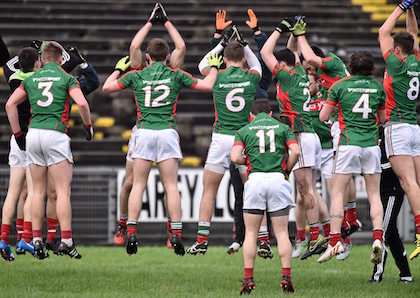
A warm up is crucially important, but are your players approaching it in the correct manner?
A lot of players, and to an extent coaches, dread the warm-up. They maybe don’t realise the importance of a good warm-up and just see it as a compulsory part of the session, but I see it as more than that.
In my view a warm up should now be broken down into two sections, the first part of the warm-up should be a preparatory phase with foam rollers and mini-bands and the second phase should obviously be a Dynamic Warm–up which is sports specific, by this I mean continuous movement in a more GAA specific manner.
For example in the first 5 minutes of a Gaelic football/hurling game you could have been required to jump, squat, lunge, bend, twist, side step, push, fall, get up, tackle, shoulder, kick, fist, shoot or change direction regularly!
There are huge benefits in using Foam rollers and mini bands in the first phase of a warm-up, take the foam roller, this should be the first thing done before any stretching or pulse raising. It gets the blood flowing to areas it wouldn’t normally reach and also helps reduce muscle tension, 4/5 minutes of foam roller is totally sufficient.
A focus on calves, quads, and hamstring, upper and lower back is ample and simply rolling back and forth on the roller will help roll away tightness and pain in these crucial muscle groups.
The mini bands are another excellent warm-up tool, 4-6 minutes of pre hab work with the bands is more than enough. These bands help train and activate some of the smaller neglected muscles that are crucial for efficient movement and function, example of mini band exercise would be a bent knee lateral walk.
Mark Verstegen the German soccer team athletic coach, puts this phase of the warm-up as absolutely pivotal to a player’s athletic development and is a key part of the training session.
The advantages of a dynamic warm–up, after the initial preparatory phase with the rollers and bands, are player’s joints and muscles are prepared for the movements mentioned above in a game.
It maintains the player’s body temperature, which is vital at this time of year particularly when cold weather could lead to nips in hamstrings, rather than let it cool down in a stand and stretch routine and most importantly it tunes the player in mentally.
The standing around, stretching in a circle is an excuse for a “bit of craic” the nature of the dynamic warm–up means players have to focus and stay alert the whole time.
Personally I cannot honestly remember the last time I asked players to jog laps in the warm-up. It simply shouldn’t happen and particularly at underage level. This dinosaur method is so outdated and should be banished from every training session.
In my own warm-ups players will have instant access to the footballs. We will start with a gradual bit of pulse rising in a dynamic square using some of the movements mentioned above.
I will follow this with a variety of handling skills where you will regularly hear me calling the need for 200 touches, particularly among young players therefore prior planning and access to plenty of footballs is vital.
The warm-up will continue with some dynamic flexibility/mobility exercises at the same time staying in touch with the ball before we eventually move into some congested drills where the volume of traffic improves player’s concentration and communication levels building to match pace.
Finally, finishing off the warm-up with a game related exercise with some contact which will help players mentally and physically to reach game levels.
Interestingly when considering how intense your warm-up should be, Billy Walsh the Irish Olympic boxing coach mentioned how the Irish boxers had changed their warm-up intensities in the London Olympics from what they were using in the Beijing games and fascinatingly had a major impact in performance.
In Beijing they were holding boxers back in the warm-up and not warming up at fight intensity; result was fighters were slow getting into their bouts. In London they changed this so the warm-up built towards fight intensity and a remarkable improvement was recognisable.
Finally research has interestingly shown that a 3 minute post half-time warm up and stretching routine may reduce the occurrence of second half muscle and tendon injuries.
Whatever way you lay out your pre match or training warm-up out consider numbers, time of year, weather and keep it to 18-25minutes and bear in mind the effects of a good warm-up are lost in 10-12minutes so keep the talking to a minimum!
Receive quality journalism wherever you are, on any device. Keep up to date from the comfort of your own home with a digital subscription.
Any time | Any place | Anywhere











